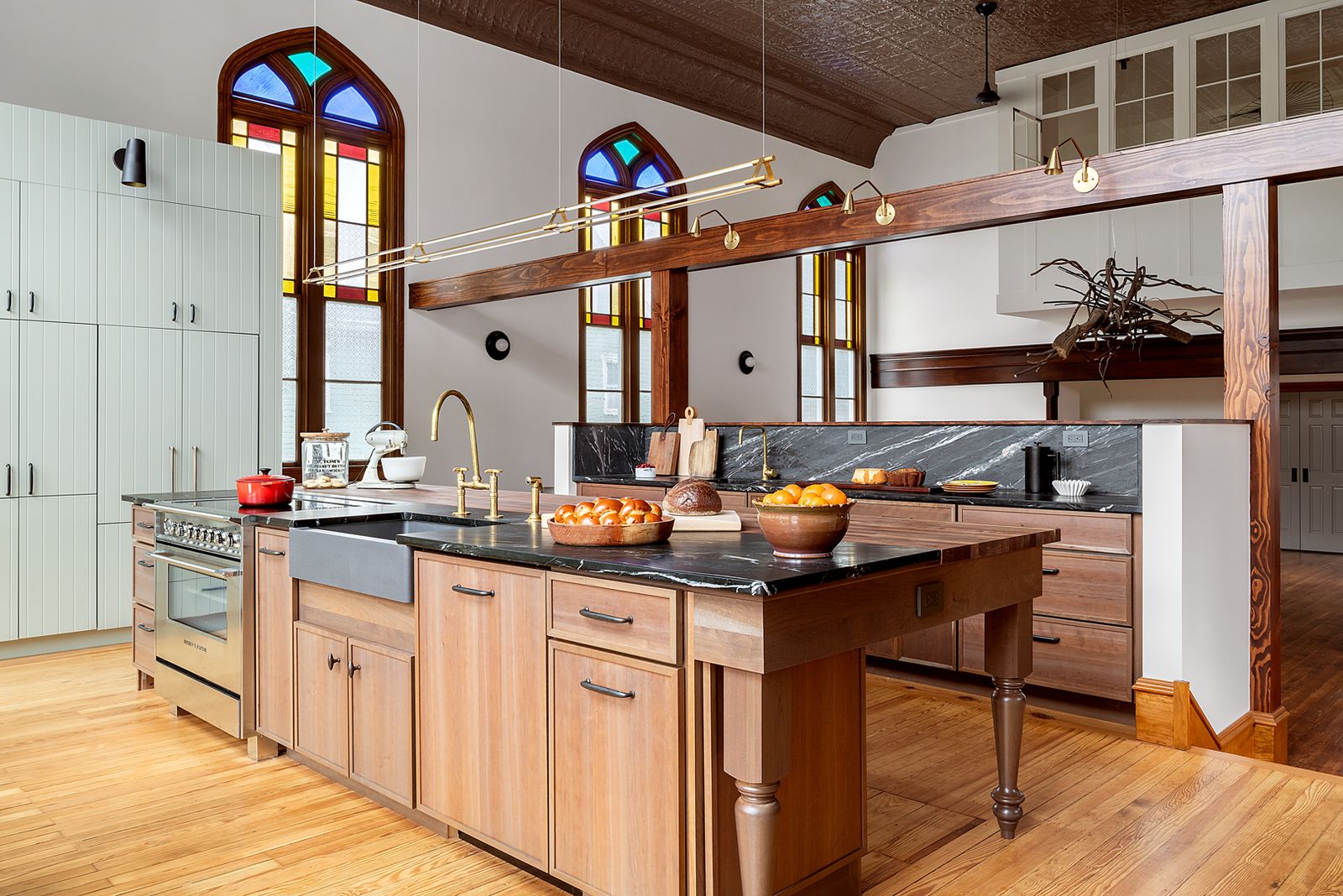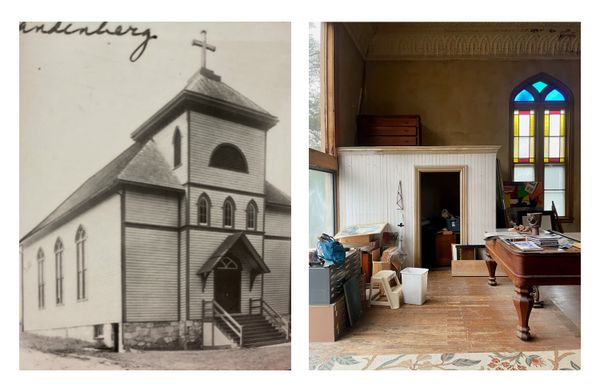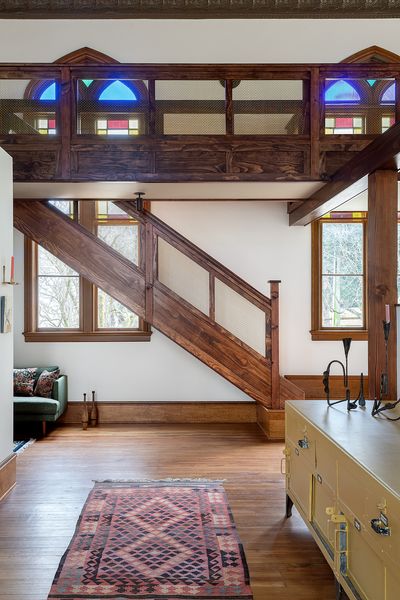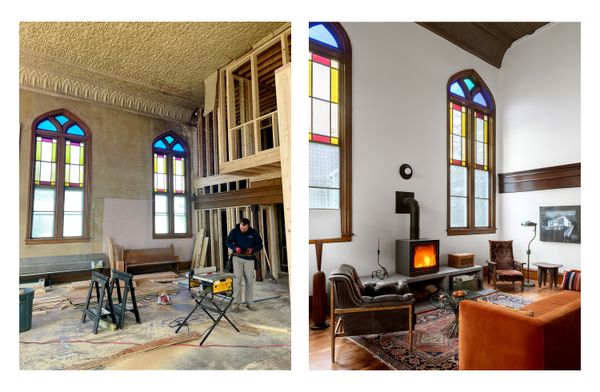“We contacted our realtor and said ‘this is the house we want.’ She thought we were crazy.”

Welcome to Different Strokes, a look at unique home design choices that beg for further explanation.
Angus Fredenburg and Esther Han knew as soon as they drove by the yellow-painted wooden clapboard church in bucolic Landenberg, Pennsylvania, that it was meant to be their future home. Set on two-and-a-half acres, the picturesque property included the late-19th-century main church and several exterior buildings. But it was far from turnkey.
“We both really like old buildings and that character that comes with them, and we knew that it could be turned into something really cool,” Esther says. “We contacted our realtor right then, and said ‘this is the house we want.’ She thought we were crazy.”

Angus Fredenburg and Esther Han bought a former church, built in 1893, in Landenberg, Pennsylvania, after driving past the for-sale property in winter 2021.
Photos courtesy Studio IQL
Originally built in 1893, the property needed a lot of work, but it also came with a rich history. After the St. Francis Xavier Catholic Church was deconsecrated in the 1960s, local artist Bernard “Bernie” Felch and his wife Rosamund “Roz” duPont turned it into their home and informal artist’s salon, leaving the space mostly unchanged from its previous life as a house of worship for about 50 years. Dupont continued to live there after Felch died in 2008, and when she moved out, Felch’s daughter cared for it while it sat unoccupied.
The building came filled with books and art and several pianos (one of which Angus and Esther kept). Having purchased the place in winter of 2021 during the pandemic, the couple moved there after Esther, a gynecological surgeon, completed a medical fellowship in New York City and accepted a job at a hospital close to Landenberg. They envisioned the property as a rural residence that they could host and entertain from, but they made sure to add home offices for Angus, an educator, and Esther, who has since started a job where she works four days a week in New York, and one day remotely.
The couple wanted to maintain many of the hallmarks of the building’s past. Church-to-home conversions, which exist at the intersection of a few trends—including the global decline of religion in younger generations and the oversupply of property owned by faith-based institutions amid the growing need for new, affordable housing—require some pretty specialized expertise to pull off well. The couple enlisted Val Nehez of Studio IQL, a Philadelphia-based interior design studio whose offices are in an 1890s church the firm converted, to make theirs happen.

The couple hired Studio IQL, a Philadelphia design firm founded by Val Nehez, to help them convert the space into a full-time home where they could host and also both comfortably work from.
Photo by Rebecca McAlpin
Their renovation retained the 22-foot-high ceilings, stained-glass windows, and original tin ceiling tiles. “A lot of what I would call ‘repurposing’ in the renovation process was reusing original materials in different spots in the church,” Angus says. “We removed and refinished a lot of materials like trim, railing, doors, glass, and ceiling panels and then put them back either in place or somewhere new.” The confessional became a closet with the original doors intact, and the sacristies transformed into a pantry and mudroom. They converted the choir loft into the primary bedroom, put the kitchen in a raised area that used to be the altar, and added a catwalk along one side of the former church’s nave to create upstairs workspaces above a family room. The addition of radiant floor heating ensured that the notoriously drafty building type was warm and cozy year-round.
Thanks to Angus’s DIY chops—which he developed as a kid helping his “jack-of-all-trades” father with projects around a house that was in a constant state of renovation—and both his and Esther’s hands-on roles in the interior design, Nehez likened the process of transforming the 100-seater former house of faith into a comfortable 4,000-square-foot home to an Amish barn raising. We spoke with Angus, Esther, and Nehez about the specific challenges presented by this project, and how they made it their own while honoring the legacy of its past. Our conversation has been edited and condensed for clarity.

The renovation retained the former church’s 22-foot-high ceilings, stained-glass windows, and tin ceiling tiles.
From left: photo courtesy Studio IQL; photo by Rebecca McAlpin
See the full story on Dwell.com: They Made Sure Their Church-to-Home Conversion “Still Looked Like a Church”
Related stories:

